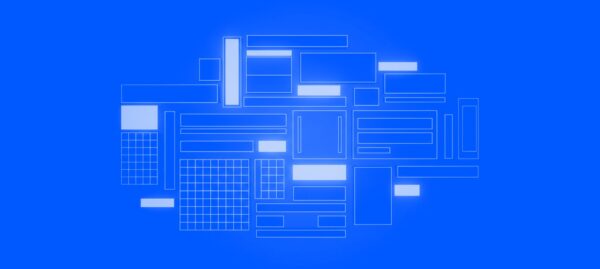Unstyled Components: A Must for Modern Web Applications
Jonathan Felipe de Oliveira | Dec 23, 2025

Artificial Intelligence (AI) continues to be a force to be reckoned with across industries and offers businesses the chance to create innovative solutions to real-world problems. Incorporating AI into your applications can make your apps smarter and more capable.
Welcome to the first installment of our new blog series all about AI techniques to help you create better apps.
In this post, we’ll dive into the fundamentals of regression, discussing its types, practical applications, and common challenges. Plus, we’ll give you a hands-on example to help you implement regression in your projects.
Whether you’re an AI enthusiast or a developer looking to enhance your app’s capabilities, this guide will give you the knowledge you need to leverage regression effectively.
Regression is a powerful AI and machine learning technique for understanding and predicting relationships between variables. It helps us find the connection between dependent variables (the outcomes we want to predict) and independent variables (the inputs we use to make those predictions.)
The main goal of regression is to find a function that uses independent variables to predict the dependent variable.
In simpler terms, if we know the values of our input variables, we can use regression to predict the output.
In artificial intelligence, regression falls under supervised learning, which means that the algorithm learns from labeled data to predict outcomes.
By understanding relationships between variables, regression allows us to forecast trends, predict outcomes, and uncover connections between different factors.
Let’s explore how regression is applied in real-world scenarios to solve practical problems:
Here are the main types of regression models.
Simple linear regression is a basic model that examines the relationship between one independent variable (input) and one dependent variable (output.)
Let’s say you want to predict the score (Y) of a student based on the number of hours they studied (X).
Here’s the data we’ll use:
We can find the best-fit line and get the regression equation:
Y = 40 + 5X
If a student studies for 5 hours (X=5):
Y = 40 + 5(5) = 65
So, the predicted score is 65.
Multiple linear regression is similar to the simple linear model, except that it uses two or more independent variables to predict the dependent variable.
Let’s say you want to predict the price of a house (Y) based on its size in square feet (X1) and the number of bedrooms (X2).
Here’s the data we’ll use:
We find the best-fit line and get the regression equation:
Y=200000 + 50X1 + 25000X2
If a house is 1800 sq ft with 3 bedrooms (X1=1800, X2=3):
Y=200000+50(1800)+25000(3) = 365000
So, the predicted price is $365,000.
Non-linear regression is used when the relationship between the independent variables and the dependent variable is not a straight line. It can model more complex patterns.
Let’s say you want to predict the growth of a plant (Y) based on the amount of fertilizer used (X). The relationship is nonlinear, and we use the equation:
Y = 3X2+2X +5
If we use 4 kg of fertilizer (X=4):
Y = 3(4)2+2(4) +5 = 61
So, the predicted growth is 61 units.
Although regression can be implemented in just a few steps, fine-tuning your model and addressing various challenges can be complex. Ensuring the accuracy and reliability of your regression models often involves overcoming several common obstacles.
Here are some of the key challenges you might encounter:
It is the process of scaling independent variables so that they all have a similar range. Normalization is crucial in regression to ensure that all features contribute equally to the model. Without normalization, larger-scale features can disproportionately influence the results, leading to inaccurate predictions.
Outliers are observations with significantly higher or lower values than the rest of the data. They can skew the results and lead to misleading conclusions. It’s important to identify and handle outliers appropriately, either by removing them or using robust regression techniques that minimize their impact.
Multicollinearity occurs when independent variables in a regression model are highly correlated. This can make it difficult to determine each variable’s individual effect and complicate the model’s interpretation. Techniques such as the Variance Inflation Factor (VIF) can help detect, while techniques such as feature selection and extraction, for example, PCA, can mitigate its effects.
Underfitting occurs when a model is too simple to capture the underlying trend in the data, leading to poor performance on both training and testing datasets. Some techniques such as increasing the number of features with feature engineering, removing noise from the data, and increasing the number of epochs in training can help, and ensuring the model has enough complexity to capture the data’s patterns is essential to avoid underfitting.
Overfitting happens when a regression model performs exceptionally well on the training data but poorly on new, unseen data. This usually occurs when the model is too complex and captures noise rather than the underlying pattern. Techniques such as cross-validation and regularization can help prevent overfitting.
By being aware of these challenges and applying appropriate techniques to address them, you can build more reliable and accurate regression models.
There are several different types of regression algorithms. Each one can result in a different function. The most popular algorithms are:
Below, we’ll share an example that demonstrates how to make predictions on diabetes progression using these algorithms.
For that, we’ll use Python, a powerful programming language for AI development that offers a wide range of libraries and tools.
We’re sharing this example using Google Colab, a cloud-based tool that runs Jupyter notebooks. Jupyter notebooks are especially useful for writing and executing code in an interactive environment, making it easy to experiment with different algorithms and visualize results.
In this example, we primarily use the following packages:
While TensorFlow is a powerful tool for various AI tasks, which excels in Deep Learning and model customization, we chose Scikit-learn for this example due to its simplicity and ease of understanding, making it ideal for demonstrating multiple regression techniques.
It’s important to say that Pandas is another very important library for data manipulation and analysis. It makes handling and processing datasets easy. In this example, we didn’t need this type of processing because the dataset had already been normalized.
Here’s a link to the Google Colab notebook where you can follow along and see the code in action: Google Colab Example
The example above focuses on predicting diabetes progression by evaluating the performance of various regression models.
In this scenario, each model is trained, predictions are generated, and their performance is assessed using metrics and visualized with a chart. It also includes a detailed description and comparison of these models to identify the most accurate one for predicting diabetes progression.
As demonstrated in this example, regression can be implemented in just a few steps, making it an accessible and powerful tool for predictive modeling.
Remember, successful regression models depend on careful preprocessing, like normalization, and mindful handling of potential issues like overfitting and multicollinearity. By mastering these elements, you can improve the accuracy and reliability of your predictions across various use cases like health, finance, real estate, and more.
The examples we’ve discussed illustrate the versatility of regression techniques, but the potential applications are virtually limitless.
Explore Classification, another essential AI technique for categorizing data and making informed decisions. Read the blog post here.
To learn more about how we’re building apps that support business goals, check out some of the other posts on the Cheesecake Labs blog.


A computer scientist who loves to study new technologies. Also enjoys rap, watching movies and TV shows, sports (especially soccer), and playing videogames.


